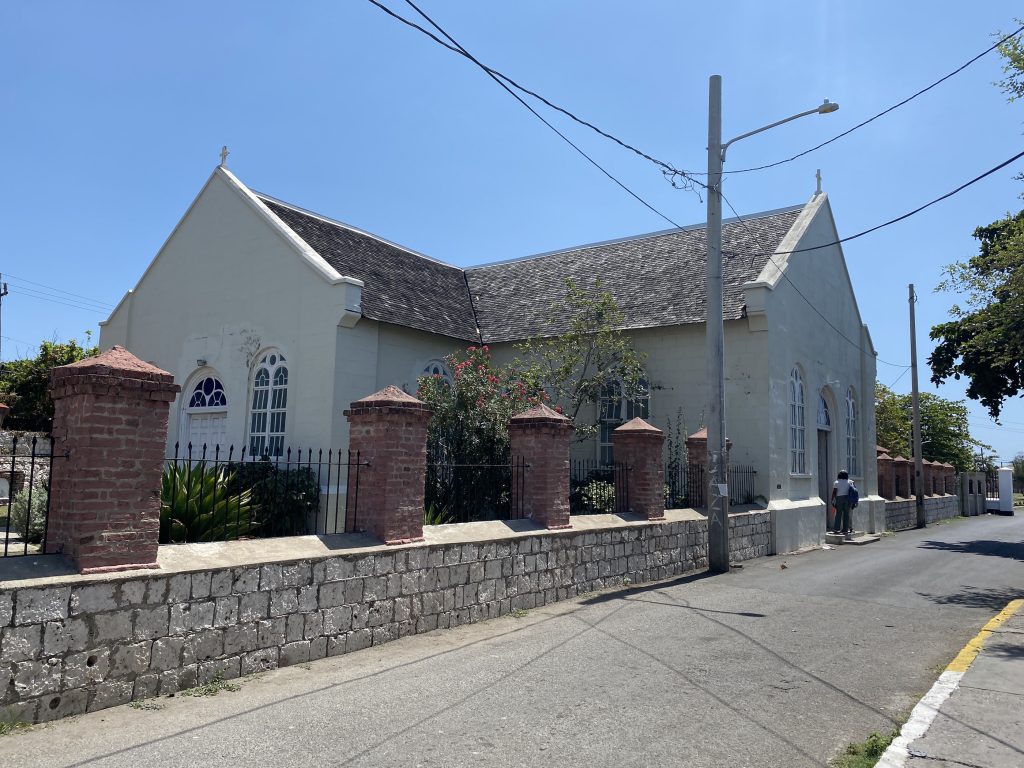
The original Church was destroyed by the great earthquake of 1692 in Port Royal. A second Church which was constructed shortly after, was destroyed by fire in 1703. A plaque outside the vestry records that it was rebuilt between 1725-1726.

Since 1726, the building has undergone much restoration and been completely reroofed. Its walls are now faced with cement marked to simulate stone blocks, thus hiding the original brick walls of the Church and of course removing the permeability of the walls. This has been exacerbated by a similarly hard render internally. Recent works to replace some of the internal render with a more sympathetic and permeable render have been somewhat defeated by the use of a non-permeable masonry paint which is breaking down in a pattern of spots relating to faults in the backing structure.

(Andrew Smith)
The FGSJ recommended that all loose and flaking paint should be brushed back and a lime based paint be used.
The memorial tablets on the walls, some of which have fallen recently, were surveyed. We also looked at the very fine memorial to Lt. William Stapleton, d. 1754, by Louis-François Roubiliac which is need of careful repair and conservation. A marble console carries a bas-relief which depicts poor Stapleton being killed by the explosion of a cannon, and above that is a shrouded marble slab, with nautical accoutrements around its base, that relates the story of his death in the Fort at Port Morant: see http://memorials.rmg.co.uk/m3449/.

(Andrew Smith)
The FGSJ have asked for a quotation for the work required to this monument as well as inspecting and reporting on the other monuments here and at the Cathedral in Spanish Town to the Jamaica National Heritage Trust.

